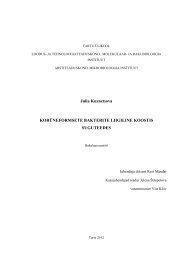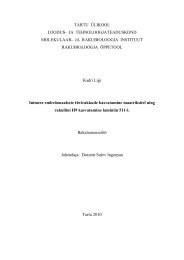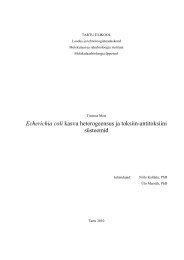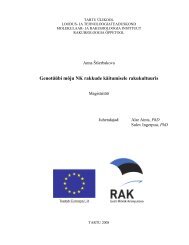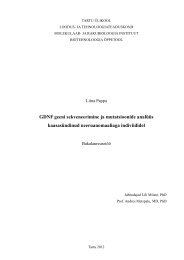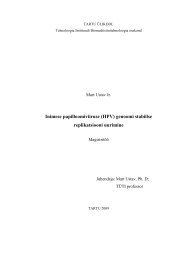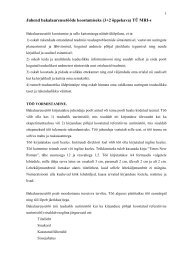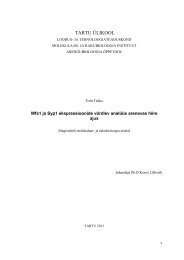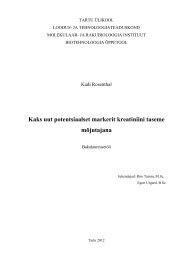Susanna Tamman
Susanna Tamman
Susanna Tamman
You also want an ePaper? Increase the reach of your titles
YUMPU automatically turns print PDFs into web optimized ePapers that Google loves.
Epidemiological study of Klebsiella pneumoniaeby multienzyme multiplex AFLP-PCR<strong>Susanna</strong> <strong>Tamman</strong>SummaryIntroduction: Klebsiella pneumoniae is an opportunistic pathogen from the genusEnterobacteraceae which causes nosocomial infections in intensive care units at hospitalsaround the world. Extensively studied everywhere, different methods of genotyping K.pneumoniae have been developed, the most widely used of which is pulsed-field gelelectrophoresis (PFGE), but as this method is time-consuming and technically difficult toconduct PCR-based methods are being standardised for use.The aim of this study were (i) to conduct genotyping of K. pneumoniae onmultienzyme multiplex AFLP-PCR and compare the results to the results of PFGE analysis;(ii) genotype K. pneumoniae strains isolated from a neonatal intensive care unit in Tallinn;and (iii) study the neonates’ colonization with K. pneumoniae on two periods (August 2006 –February 2007 and March 2007 – December 2007).The study is a part of a larger research to determine the factors influencing themicrobial colonisation of neonates in the NICUs in Tartu and Tallinn.Results and conclusions: The study showed that multienzyme multiplex AFLP-PCRis suitable for genotyping K. pneumoniae. Seven different strains were identified among totalnumber of isolates. During the first study period (August 2006 – February 2007) two strainswere prevalent. One of the strains (strain B) was found colonising the majority of the patients,indicating a possibility of bacterial transmission from patient to patient. Strains isolated fromthe patients on the second study period (March 2007 – December 2007) differed from thestrains isolated during the first period.The study suggests collecting samples from the hospital environment and medicalworkers to analyse their colonisation with K. pneumoniae in addition to the patients’colonization. More attention should also be paid to assessing antibiotic susceptibility of theresistant strains.31



